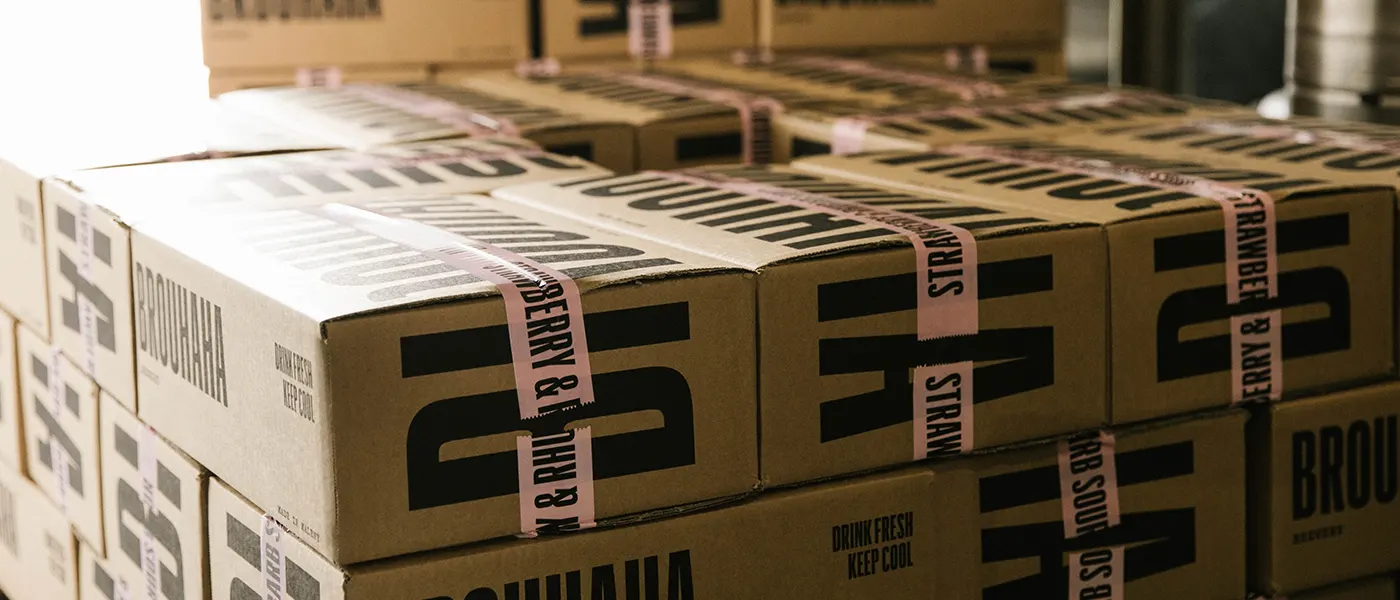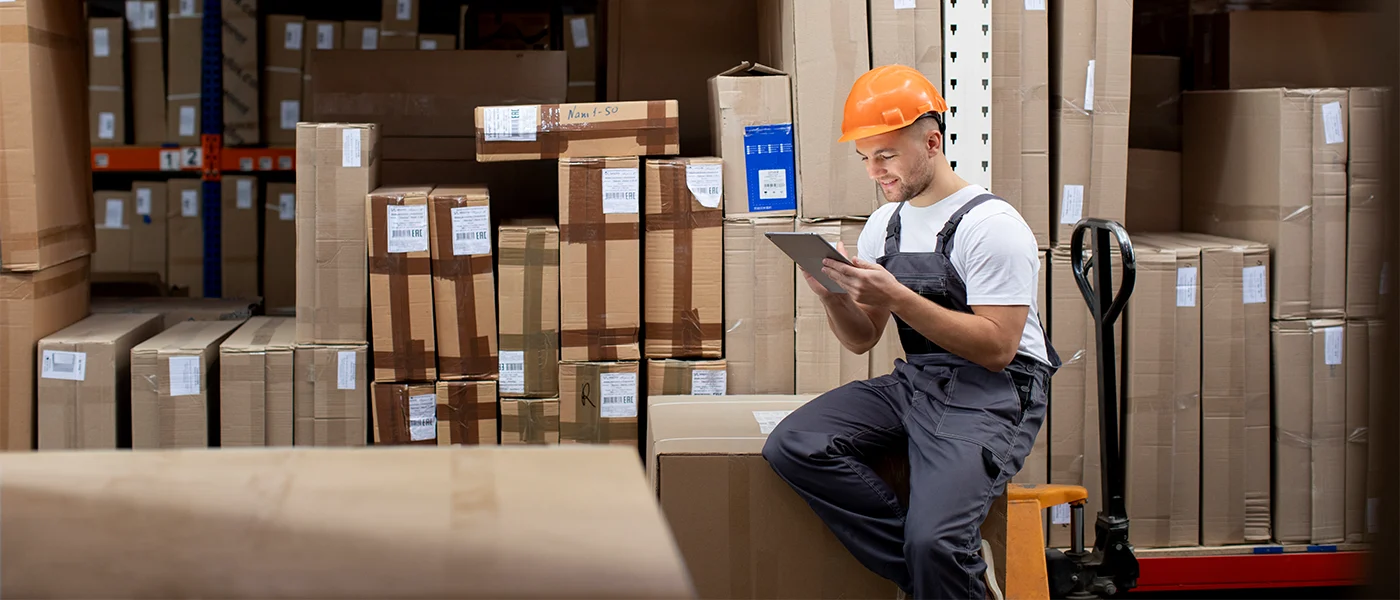Choose the Right Distribution Type for Your Business’s Success
In this age of convenience, e-commerce changed the definition of shopping globally. We live in a time where just about anything and everything can be searched and ordered online and delivered right to our doorstep. As a result, a larger part of the consumer pool chooses the convenience of online stores, allowing the sellers to turn towards easy-to-use online stores.
However, distribution structure has not changed drastically over time, yet online businesses often strive to fulfill the enormous market demand. Distribution is an essential part of the product-based supply chain.
A robust distribution strategy immensely affects the business. Therefore, a comprehensive understanding of either direct or indirect distribution can provide a deeper insight into your business working model.
Let us learn more about the distribution structure to increase order fulfillment accuracy.
What Is Direct Distribution?
A direct-distribution design involves the business’s direct administration of the distribution channel. The company sells the products directly to the customers through their in-house delivery system and is solely responsible for the delivery completion.
Direct distribution channels require more extensive work and are often more expensive. A company manages its own warehouses, logistics, and other aspects of direct distribution. However, once it is completed, direct distribution channels are shorter, structured, and more convenient than any other distribution mode.
Direct distribution allows the company to have more control over the distribution along with the final price structure. It is also beneficial for the consumer pool as the customers often can buy the product without the extra margin of retailers or wholesalers.
Direct distribution can be a complex process, yet is the most convenient way to reach the global market with lower marketing and sales costs. Direct selling to the end consumers often allows a business to engage directly with them, increasing customer value and satisfaction.

How Does Direct Distribution Work?
As a direct distribution channel works on the direct-to-consumer approach, which requires a company to have its own ‘in-house’ logistics and transportation facilities. The usual steps which constitute a direct distribution channel include:
- Manufacturing unit
- Warehouse
- Shipping
- Retail
- Online supply
With a significant part of the distribution channels working online, the orders are processed through the company website. Once a customer orders, the company ships the product directly to them.
Like an indirect distribution channel, direct distribution doesn’t require different channels of sale or the involvement of any third-party service provider.
Difference Between a Direct and an Indirect Distribution Channel
| Elements | Direct Distribution | Indirect Distribution |
| Control | The company is in charge and maintains ultimate control over the distribution channel. | With the Involvement of several external service providers, the company doesn’t have much control over this distribution channel. |
| Responsibility | The company is fully responsible for the direct distribution channel. Any discrepancies inside the distribution channel may put an immense impact on the entire supply chain process. | The companies with indirect distribution channels are not directly associated with or responsible for the distribution operations. |
| Expenses | Direct distribution channel can incur high initial costs, but with continuous improvement and development, the expenses are lowered. | Sharing distribution costs lessen the financial impact. A good vendor/supplier relationship can be proven beneficial, financially. |
| Consumer Relationship | Following the direct-to-consumer model, the company has a direct communication channel with the customers. Direct distribution supports brand recognition and increases customer loyalty. | Without any direct communication channel with the customers, the company depends upon external factors and intermediaries for customer service. |
| Logistics operations | The company is solely responsible for all logistics operations and management aspects. | The companies depend on external service providers or 3PL providers for logistics operations. |
| Delivery Time | Takes relatively less time due to direct management. A direct-distribution channel is more streamlined and clean. | Takes a lot more time for external service providers depending on the situation. |
| Brand | Puts a positive impact on building a brand. Direct engagement with customers ensures the best customer service and satisfaction, leading to improved brand recognition and awareness. | Any slight changes or discrepancies in the distribution channel can adversely affect the customer service, resulting in lowering the brand name. Companies practicing indirect distribution are not directly associated with customer service. |
| Profitability | Without any third-party service providers, companies can keep the entire profit after successful order fulfillment. | With multiple external help, the profit is shared with the other service providers. |
| Maintenance | Initially challenging to maintain, direct distribution channels need time to be processed and maintained easily. | Much easier to maintain since external service providers maintain the entire distribution channel. |

Advantages of Direct Distribution
The advantages of a direct distribution channel include:
- Receive direct feedback – The most crucial benefit of using direct distribution is its ability to obtain direct customer feedback. Direct customer communication channel allows a company to improve customer service and increases brand recognition.
- Direct control over the distribution process – Companies using direct distribution have the ultimate control over the marketing and distribution of their products. This allows a company to enjoy promoting, marketing and distributing the products.
- Improve customer relationship – Direct distribution allows a company to build genuine and transparent relationships with its end-users or customers. Direct-to-consumer fulfillment service provides a company with brand recognition and customer loyalty.
- Eliminates extra costs – Direct distribution allows a company to eliminate high markup expenses, including 3PL intermediaries, without external service providers.
- Faster delivery – With effective control over each part of the distribution channel, direct distribution allows a company to practice faster delivery. This helps improve customer satisfaction and allows the business to compete with fellow companies.
- Higher profit margins – Companies selling products directly to customers tend to possess higher profit margins on the products sold.
- Quality assurance – Direct distribution allows a company to focus on improving the overall quality and performance of the fulfillment process. The companies enjoy the independence to dictate, assess, measure the product, and make necessary changes.
- Better price engagement – Removing external service providers from different supply chain zones helps the companies develop a better and structured pricing model. This allows them to distinguish themselves from the existing market competition.
- Comprehensive data collection – Direct distribution provides better insight and allows a company to collect valuable marketing data for future reference.
Disadvantages of Direct Distribution
Apart from the wide range of advantages of using direct distribution, there are a few limitations as well. They are
- Warehouse management requirement – Companies using direct distribution channel requires an efficient warehouse management system to maintain storage space and related supply chain operations.
- Time-consuming – Building a direct distribution channel requires much time and effort. Companies practicing direct distribution are forced to maintain many things at once to ensure a proper distribution channel.
- Limited market coverage – With the involvement of numerous external services, an indirect distribution channel tends to work in an extensive global network. Direct distribution often strives to keep up with the exact networking. Companies customize their marketing strategy based on limited market coverage.
Functions of Direct Distribution Channels
Direct distribution channels are constructed and structured to provide utilities of ownership, time, and place by ensuring that the product is available when, where, and how much the customer demands. Although other than the primary transactional functions, there are other responsibilities a distribution channel fulfills. Some of them are –
- Physical distribution and logistics: After the manufacturer, distribution channels are the primary intermediaries responsible for handling the product formalities, primarily the storage, sorting, and transportation of the products to the customers.
- Facilitation: Apart from the basic producer-to-customer transportation, direct distribution channels also provide pre-purchase and post-purchase facilities such as financing, maintenance, information dissemination or proclamation, and channel coordination.
- Creating efficiencies: Direct distribution channels make the process efficient for all chain ends. By bulk breaking, wholesalers and retailers directly purchase goods from the producer in a large quantity and break the bulk by selling products in small amounts directly to the customer or other tributary channels. They also make it efficient for customers by offering different products at the same place and not having them go to different places for each product.
- Risk sharing and distribution: The risk involved is distributed among the direct distribution channel and the manufacturers and is shared with both entities. The products are mostly bought beforehand, so they try everything to sell them.
- Marketing: Direct distribution channels also prioritize marketing and are often known as marketing channels as they are the perfect medium for product and brand promotion and execution of different marketing strategies. As the intermediary, they are in contact with both ends; the customer and the producer. This gives them flexibility and helps manufacturers to propagate their brand message and promote their products to the customers.
Examples of Direct Channels of Distribution
Direct distribution channels often involve many types of sales. With different marketing strategies adopted by different brands, direct distribution offers many options to companies for distributing their products in customer- and manufacturer-specific ways. The distribution channel is direct as long as no other intermediaries are involved between the customer and the producer. Some examples of the direct distribution chain are:
- Door-to-door sales: The traditional way of door-to-door sales associates trying to sell a particular product directly to the customers has been known to companies for an extended period. The producers hire traveling sales associates to endorse or directly sell their products to customers in the field. They are known to carry either the product or promote and try to sell the product’s benefits to the customers if it is not portable enough. If successful, the customer orders the products after the sale is closed, and the producer arranges for its delivery. In the case of the salesperson carrying the product, it is sold directly on the spot.
- Chain store sales: The global market has always known brands since the market concept arose. A famous brand is always known for its widespread product availability and thus its outlets and stores. Once affordable enough, manufacturing firms can buy or rent and open proprietary retail stores that sell the products directly to the customer. Even the smallest producers can have a single store or outlet in a region and sell their products directly.
- Courier or post office sales: One of the oldest distribution methods is post office or courier sales. Many companies use courier services or the post office to sell their products directly to customers. Although not spread out among customer ranges too much, it is an efficient way of sales by sending product descriptions and literature to a select group of customers with the best odds of buying the product. If endorsed successfully, the customer orders the product via mail or another method and gets it delivered via courier or value payable post.
- Telemarketing: Some companies choose to promote and advertise their products on television to demonstrate the advantages, features, and uses of a product and listing their prices and availability. After the customer orders via phone or fax, or email, courier services deliver the products to the customer.
- Direct online selling: The modern market is dominated by e-commerce utilities. Brands like Amazon are at the epitome of product sales through the internet. It allows customers to view and order their products from the comfort of their homes or offices, order the desired products, and get them delivered within the shortest possible time. Almost every major brand has now adopted the method of e-sale via the website and the use of different delivery services. Online advertisements on different websites and domains shorten the gap making it the shortest distribution channel. Eliminating mediators and markups ensures that the goods arrive at customers’ doorsteps and discounted prices.
Factors Determining the Choice of Distribution Channels
For any business, the medium of product delivery to the customer is an essential and integral factor in its growth. It’s critical to determine how to get the product to the customer and how much investment is required.
- Company: With different channels and many options, budding businesses are often thrown astray and confused about how to proceed. Lack of capital is often a problem. One way to overcome it is by choosing one trusted distribution method and using that as the only medium until the business grows to attain affordability.
- Product: In the case of perishable products or B2B businesses, it is best to keep fewer distribution channels between producer and consumer or use direct distribution as the only method to ensure accountability. The choice is not always about whether to distribute directly or indirectly. It’s mostly to use the one that is optimal for the type of product that is being sold and the company’s stature at that point.
- Market: If the product being sold is focused on a broader market, it is best to hire a third-party distribution service and go indirect. By doing so, the company relies on that channel for distribution while it works to make the product better and focuses on overall customer satisfaction.
Conclusion
The sole aim of any company is to get its product out in the market and to its customers in time. They achieve this by various means of delivery and distribution, be it through direct distribution contact and interaction with the customer or through different media such as third-party logistics, wholesalers, retailers, distributors, etc. Independent intermediaries streamline the delivery process and make the product available to the customer at the end of the distribution chain.
In an overall market predicament, brands are mostly inclined toward how to deal with it that doesn’t harm product efficiency. With different situations and factors in play, distribution strategies and promotion media are integral in maintaining the company’s consistency through different methods.
In product and direct distribution sectors via retail or wholesale, the intermediary and the customers gain trust over a brand. This primarily ensures that customers don’t waiver and are consistent with their purchases. However, not every time, distribution channels and market strategies guarantee that a brand is uplifted and the customers are satisfied.
FAQs
What is a direct distribution channel?
Direct distribution allows a company to sell its products and services directly to customers without external service providers.
What are the basic components of a direct distribution channel?
The basic elements of direct distribution include manufacturer, warehouse, shipping, retail and online supply.
How to determine the best possible distribution channel for your business?
A company can choose an effective distribution channel based on the products they sell, distance, geographical location, and company finances.
Who practices direct distribution?
Reputed companies with multiple channels globally usually use direct distribution channels. Examples include big names like Amazon, Flipkart, InstaCart, Casper, Allbirds, Bonobos, etc.
Why is an indirect distribution channel used?
Indirect distribution channel often enjoys the benefit of working in an extensive global network. Therefore it often allows the company to compete in the open market with huge bandwidth of market coverage. Certain companies use indirect distribution to curb the extra maintenance and marketing strategy and focus on expanding the business.







